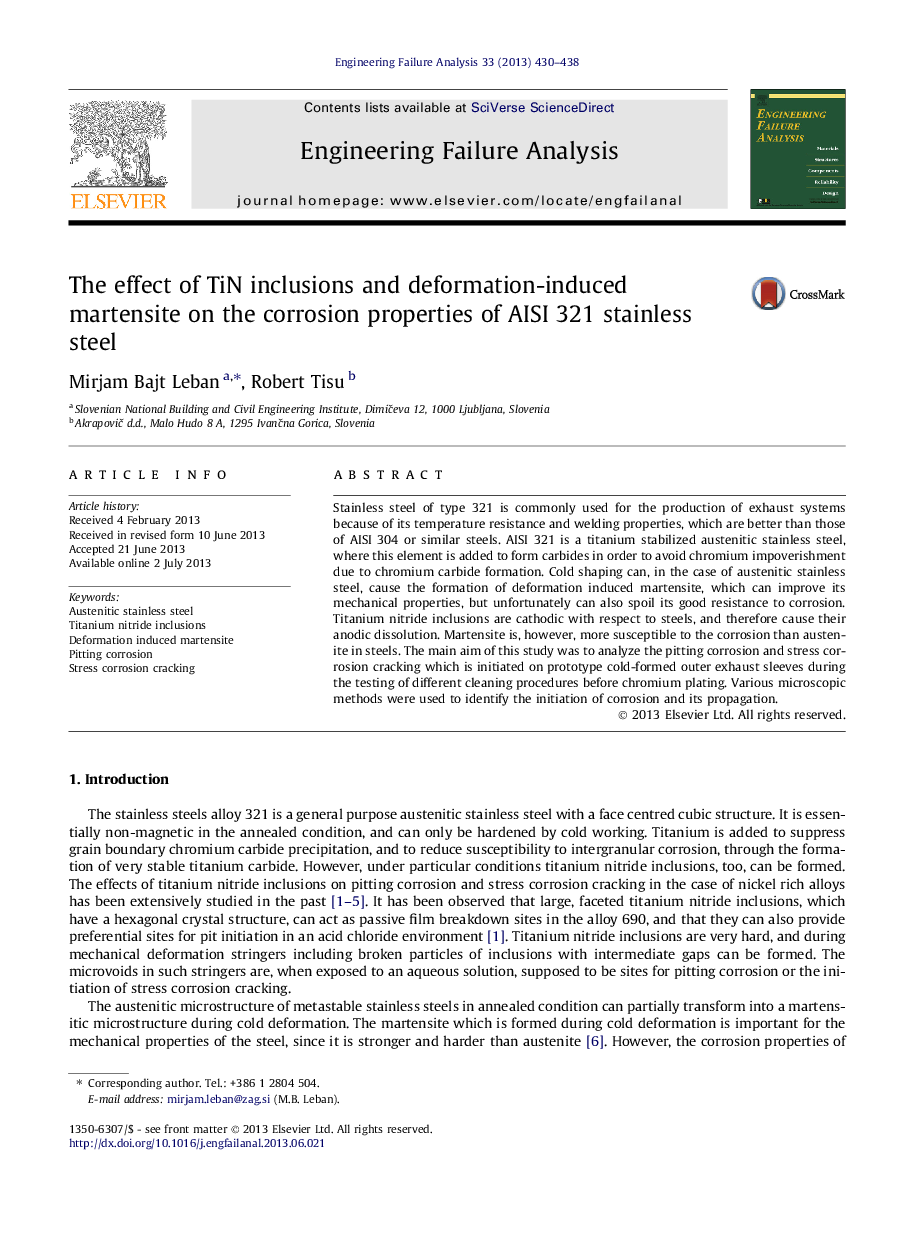| Article ID | Journal | Published Year | Pages | File Type |
|---|---|---|---|---|
| 7168557 | Engineering Failure Analysis | 2013 | 9 Pages |
Abstract
Stainless steel of type 321 is commonly used for the production of exhaust systems because of its temperature resistance and welding properties, which are better than those of AISI 304 or similar steels. AISI 321 is a titanium stabilized austenitic stainless steel, where this element is added to form carbides in order to avoid chromium impoverishment due to chromium carbide formation. Cold shaping can, in the case of austenitic stainless steel, cause the formation of deformation induced martensite, which can improve its mechanical properties, but unfortunately can also spoil its good resistance to corrosion. Titanium nitride inclusions are cathodic with respect to steels, and therefore cause their anodic dissolution. Martensite is, however, more susceptible to the corrosion than austenite in steels. The main aim of this study was to analyze the pitting corrosion and stress corrosion cracking which is initiated on prototype cold-formed outer exhaust sleeves during the testing of different cleaning procedures before chromium plating. Various microscopic methods were used to identify the initiation of corrosion and its propagation.
Keywords
Related Topics
Physical Sciences and Engineering
Engineering
Industrial and Manufacturing Engineering
Authors
Mirjam Bajt Leban, Robert Tisu,
